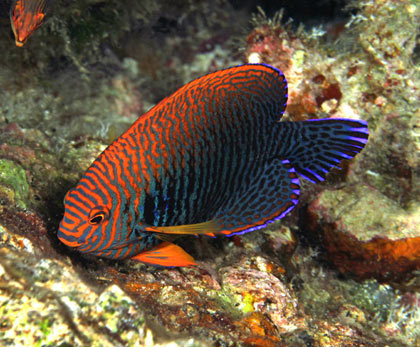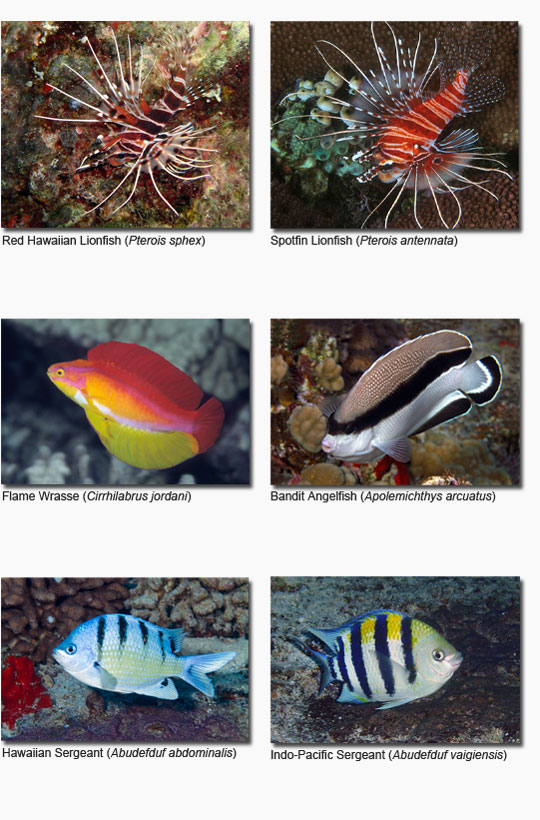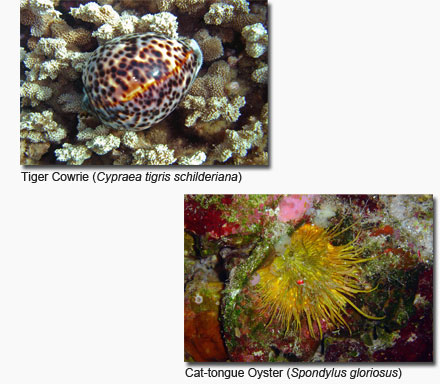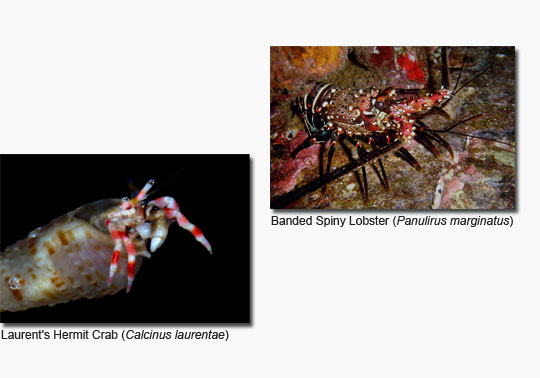
Hawaii’s Endemic Species
Scuba diving in Hawaii means you are assured of seeing species you have never seen before. Because of Hawaii’s isolation in the Pacific, a high percentage of species are endemic, meaning they are found only here. Currently about 23% of the fish, 20% of the mollusks, 18% of the algae (OK, so we won’t elaborate on the algae) and about 20% of the corals are considered endemic. These numbers are constantly changing as species thought to be found only in Hawaii are discovered elsewhere, and as opinions vary concerning when a population is different enough to be considered a separate species. Although these endemic percentages might not sound high, they are high by marine animal standards. Here is what is in store for you:


Fish
According to Dr. Jack Randall, 23% of the fish species in Hawaii are unique to the Hawaiian Islands. This can be not-so-exciting as in the case of the Red Hawaiian Lionfish (Pterois sphex), because a very similar species, the Spotfin Lionfish (Pterois antennata), is found in Indonesia and other Indo-Pacific areas.
Or it can be very exciting as in the case of the spectacular Flame Wrasse (Cirrhilabrus jordani) which is very different from its Indo-Pacific relatives.
Even more remarkable is the chubby little Bandit Angelfish (Apolemichthys arcuatus), which has no known relative anywhere in the world. This means that the species from which it evolved no longer even exists!
Endemic species result when the larvae of a particular species arrive in Hawaii and then tens or hundreds of thousands of years pass without another infusion of such larvae. During that time these individuals have only each other to breed with. Their gene pool changes over time, influenced by the local conditions, and eventually they become different from the original ancestor species.
In 1992 we witnessed one step in this process. Up until July of 1992 only two species of sergeant were known from Hawaii – the Blackspot Sergeant and the Hawaiian Sergeant (Abudefduf abdominalis). Then one day at Molokini we noticed juveniles of a third species, the Indo-Pacific Sergeant (Abudefduf vaigiensis), a species never previously seen in Hawaii. We were witness to a group of larvae of a particular species that had run the gauntlet of time and adverse conditions and had arrived in the Hawaiian Islands. It is thought that our Hawaiian Sergeant evolved from this Indo-Pacific Sergeant, but they have both changed so much that they are now considered separate species.
Mollusks
Dr. Alison Kay estimated from the current number of marine mollusk species found here that a new marine mollusk may have successfully colonized the Hawaiian Islands on average only once every 13,000 years! Of course, the majority of species capable of colonizing Hawaii would have done so early in the Hawaiian Islands’ formation when there was an explosion of new habitats to colonize, with species less capable of colonizing trickling in by chance later on.
Of the roughly 1,300 currently-recognized species of shelled marine mollusks in Hawaiian waters, about 20% of the species and sub-species are considered to be endemic. Some beautiful examples are the Tiger Cowrie (Cypraea tigris schilderiana) and the subspecies of the Cat-tongue Oyster (Spondylus gloriosus).


Crustaceans
Aside from the Banded Spiny Lobster (Panulirus marginatus), most of Hawaii’s endemic crustaceans are rarely seen by divers due to their nocturnal habits and/or small size. One of these, Laurent’s Hermit Crab (Calcinus laurentae), is only 5 mm in carapace length.
Within the crustaceans, different groups have different endemic percentages. The snapping shrimp species for instance are 40% endemic!
Hawaii diving is interesting in so many ways, from the volcanic topography to the combination of animals that have colonized Hawaii to the species that can be found only here. Diving here is like no place else on earth.
